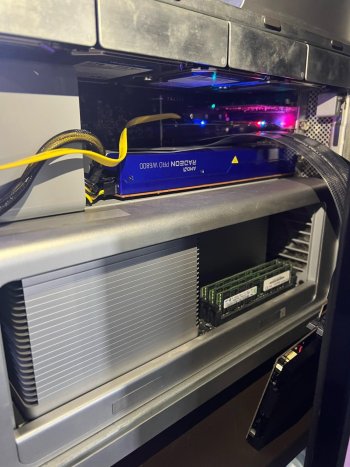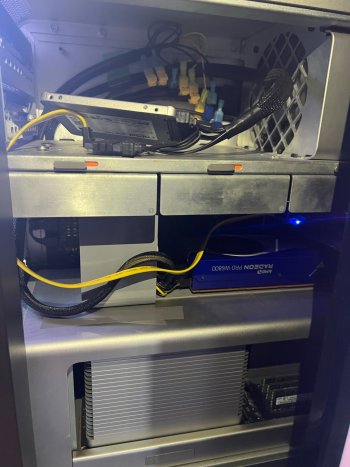I've been looking at Sapphire branded cards - the Pulse 580 I have seems to hav been pretty stable, so I'm happy going wit them again. What's the key figure to look at on the stats for determining the power use relative to the available potential power?
After you install the card into the cMP, you can check the power draw (or current) of the PCIe slot, PCIe Booster A, and PCIe Booster B.
From the link in my last post, you can see how I analysis the power draw of these three items.
Ideally, you want all of them stay below 75W. In fact, for PCIe slot, that must be within 75W. So far, there is no evidence that the slot can provide more than 75W safely for long period of time.
But in most cases, the power draw isn't that balance between the two 8 pins. May be one of them draw 100W, but the other just draw 50W. That's why we recommend a "power balancing connection" (e.g. via EVGA PowerLink. Or simply just
connect the cables via a 6pin / 8pin connector)
Furthermore, make sure each Booster's power draw is with 120W. TBH, this is very hard to find out,
SMC can only report up to 7.99A for each PCIe booster. So 12V x 8A = 96W. If you see anything stay at 96W, you better stop the test. Because that may means the card is actually drawing 115W from a mini 6pin etc. That 120W is an estimate number which users discovered that the SMC may command a hard shutdown. That's why we suggest not going anything near that number.
By considering you can only read anything up to 96W. As long as you keep the power draw below that, then it should be safe.
I "overdraw" (~90W) the mini 6pins for many years, no damage. And if we assume Apple follow the PCIe standard, then the mini 6pin should able to handle way more than 75W. Overdraw a little bit from there shouldn't be a problem.
Anyway, if you go that route, please post whatever you observed (the most useful number are capture in your real workflow, under max stress to the GPU. If can't do that, use benchmarks to simulate high demand). And I can help to tell if there is any immediate danger.



